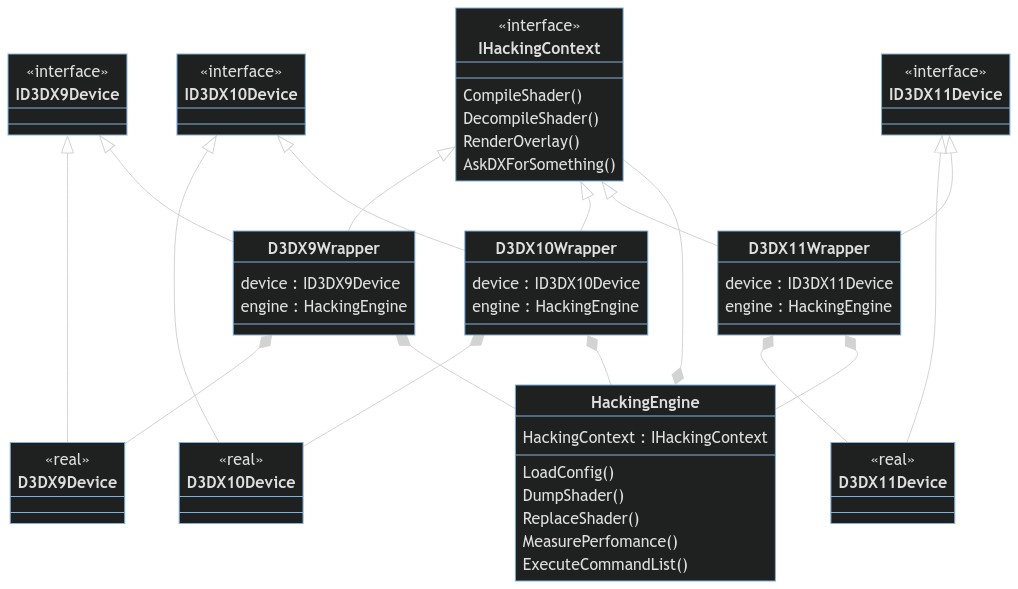Thanks for the feedback. Response inline.
- We aren't certain that we would want to update to v142 toolset. We want to still be compatible with the handful of people that still use 3Dmigoto on Win7. There is rarely any value whatsoever in updating toolsets, and we discourage it unless you know of something specific you want or need.
- It looks like you just want to use the cmd_Decompiler project? No need to update the other tools if that is the case. Each subproject is OK to have its own toolset.
This is a hangover from when I was working on something else (which went nowhere since I got stuck with no help). I just happen to have 2019 installed and don't like having multiple versions take up space. It would be nice if the compiler could be installed without the rest of the IDE! They're separate commits, so can be cherry picked separately if eventually merged.
- I'm not sure I understand the need for DX9 changes here? The Decompiler should be able to handle any DX9 shaders, because it already handles SM1. Maybe there is something special about them I'm missing. Noting that only the DX9 variant of 3Dmigoto will actually dump those shaders, which can be then be Decompiled or disassembled with the stand alone cmd_decompiler tool.
- I don't understand the need to add -T translate option? Isn't -d already doing the job you want?
I wanted to convert ASM disassemblies from HelixMod into HLSL since I really hate reading ASM. I tried running it through the standalone cmd_Decompiler exe but it requires a binary (and I don't know how to export Binary shaders from HelixMod) so I added the translate option to convert disassembled ASM to HLSL.
The code gave me the impression that it should work with a DX9 (SM1-3) shader due to various code blocks marked DX9, but once I got the code compiling for DX9 (see below) I found it left out significant chunks of the shader which meant it couldn't be recompiled. This is what I've tried to add, which I've done by studying the MS documentation for SM1-3 and trying to find appropriate places to integrate the alternative logic.
- Adding the MIGOTO_DX=9 is right for dx9 source base, but typically we'll define that in the solution options instead of files, so that it can change for any given build type. We could add a specific DX9 Debug/Release build for example.
I guessed making a DX9 specific configuration might be the solution, I just dislike configurations beyond (Debug|Release)(x86|x64) since it makes everything more complicated. Is it possible to hook into DX9 and DX11 from the same process?
- Just FYI, we are possibly moving to a new code format which should dramatically improve our code quality, at the expense of breaking everything prior and making commit comparisons impossible because of so many changes. Look at Rename_Reformat branch if interested.
- Minor white space changes that are undesirable. As a general rule, we avoid white space changes on commits because it adds noise to the history, and makes comparisons with older versions much harder. You should set your editor to avoid adding white noise.
Thanks, I will have a look. In my day-to-day development I rely on Autoformatting for consistency. This project is not at all consistent, so hopefully your new branch will sort that out so autoformatting can be used from now on? I will make a separate commit with the autoformatting so that can be ignored with cherry picking too.

What I've done so far:
PS_2_XandVS_2_Xto method signaturedcl_XXXopcodesIssues:
void main(when detected).c0constant register in the parameter/register list, and therefore leaves the output invalid.Remaining work?
I think I know what I need to do next, but it seems like a big task...
Rather than building the shader output as the source is parsed, I could save the components in vectors and construct it at the end. This would allow me to collect the input, output and temporary registers as the individual commands are processed, and output them in a sensible order at the end.
I could also detect any undeclared constant/uniform registers and infer their type from usage and use the register name as the variable name, which isn't particularly helpful but would make it valid.
I then need to figure out is whether it can be compiled back to bytecode that's equivalent to what was disassembled.
Also, I've had to change
MIGOTO_DXto be9so that it uses DX9. Not sure if we can have both DX versions included?